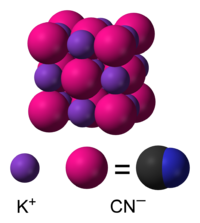
Electrocatalytic reduction of hydroxylamine on copper immobilized platinum surface: Heterogeneous kinetics and sensing performance
Sign Up to like & getrecommendations! Published in 2019 at "Electrochimica Acta"
DOI: 10.1016/j.electacta.2019.06.058
Abstract: Abstract A Cu electrode can reduce hydroxylamine (HA) in KCl solution but losses its activity very quickly. However, while Cu particles are immobilized on a Pt surface, the resultant electrode showed excellent catalytic activities towards… read more here.
Keywords: surface; electrode; reduction process; hydroxylamine ... See more keywords

Trace Cu(Ⅱ) can enhance the degradation of Orange Ⅱ in Fe(Ⅱ)/hydroxylamine/persulfate system
Sign Up to like & getrecommendations! Published in 2020 at "Journal of environmental chemical engineering"
DOI: 10.1016/j.jece.2020.104907
Abstract: Abstract This paper explored the effect of trace Cu(Ⅱ) (5 μM) on the degradation of Orange Ⅱ by Fe(Ⅱ)/Hydroxylamine (HA)/Persulfate (PS) system. The results showed that the addition of trace Cu(Ⅱ) not only improved the degradation… read more here.
Keywords: degradation; system; trace; orange ... See more keywords

Electro-generated poly (cysteine) film as a sensor platform towards the simultaneous electroanalysis of hydrazine and hydroxylamine
Sign Up to like & getrecommendations! Published in 2021 at "Materials Chemistry and Physics"
DOI: 10.1016/j.matchemphys.2021.124880
Abstract: Abstract Hydrazine and hydroxylamine are toxic and mutagenic molecules which are in the top list of environmental pollutants. The present study details the electro-generation of polycysteine onto the pencil graphite surface and its effective utilization… read more here.
Keywords: simultaneous electroanalysis; hydroxylamine; hydrazine hydroxylamine; film ... See more keywords

Early decomposition of hydroxylamine cations and thermal stability of dihydroxylammonium 5,5′-bistetrazole-1,1′-diolate
Sign Up to like & getrecommendations! Published in 2021 at "Thermochimica Acta"
DOI: 10.1016/j.tca.2021.179064
Abstract: Abstract The presence of hydroxylamine anions enables typical high-energy ionic salt 5′-bistetrazole-1,1′-diolate (TKX-50) to form abundant hydrogen bonds, which can dissipate external energy stimuli through reversible hydrogen transfer between hydroxylamine cation and bistetrazole N-oxide anion.… read more here.
Keywords: tkx; decomposition hydroxylamine; hydroxylamine; decomposition ... See more keywords

Hydroxylamine metabolism of Ca. Kuenenia stuttgartiensis.
Sign Up to like & getrecommendations! Published in 2020 at "Water research"
DOI: 10.1016/j.watres.2020.116188
Abstract: Hydroxylamine is a key intermediate in several biological reactions of the global nitrogen cycle. However, the role of hydroxylamine in anammox is still not fully understood. In this work, the impact of hydroxylamine (also in… read more here.
Keywords: anammox; metabolism; hydrazine; anammox bacteria ... See more keywords

Neutralizing the Detrimental Effect of an N-Hydroxysuccinimide Quenching Reagent on Phosphopeptide in Quantitative Proteomics.
Sign Up to like & getrecommendations! Published in 2018 at "Analytical chemistry"
DOI: 10.1021/acs.analchem.7b04678
Abstract: One of the most common chemistries used to label primary amines utilizes N-hydroxysuccinimide (NHS), which is also structurally incorporated in various quantitative proteomic reagents such as isobaric tags for relative and absolute quantification (iTRAQ) and… read more here.
Keywords: effect; neutralizing detrimental; detrimental effect; quenching reagent ... See more keywords

Linking Genome-Centric Metagenomics to Kinetic Analysis Reveals the Regulation Mechanism of Hydroxylamine in Nitrite Accumulation of Biological Denitrification.
Sign Up to like & getrecommendations! Published in 2022 at "Environmental science & technology"
DOI: 10.1021/acs.est.2c01914
Abstract: Given hydroxylamine accumulation in various nitrification systems and its potential mechanism in regulating the subsequent denitrification process were unraveled in this study. Hydroxylamine (>0.5 mgN/L) immediately induced nitrite accumulation of activated sludge by inhibiting the… read more here.
Keywords: hydroxylamine; centric metagenomics; accumulation; nitrite accumulation ... See more keywords

Bioreduction of Gold Ions under Greener Conditions by the Thiol-Modified M13 Bacteriophage and with Hydroxylamine as the Autocatalytic Reducing Agent
Sign Up to like & getrecommendations! Published in 2022 at "ACS Omega"
DOI: 10.1021/acsomega.2c00563
Abstract: Bioreduction of gold ions by the thiol-modified M13 bacteriophage (M13-SH) has been exploited as the potential alternative to conventional methods based on toxic chemicals, due to the gold affinity of the thiol groups, inherent gold… read more here.
Keywords: hydroxylamine; gold ions; gold; virus ... See more keywords

Alcaligenes ammonioxydans HO-1 antagonizes Bacillus velezensis via hydroxylamine-triggered population response
Sign Up to like & getrecommendations! Published in 2022 at "Frontiers in Microbiology"
DOI: 10.3389/fmicb.2022.920052
Abstract: Antagonism is a common behavior seen between microbes in nature. Alcaligenes ammonioxydans HO-1 converts ammonia to nitrogen under aerobic conditions, which leads to the accumulation of extracellular hydroxylamine (HA), providing pronounced growth advantages against many… read more here.
Keywords: hydroxylamine; velezensis; population response; alcaligenes ammonioxydans ... See more keywords

Complexes of Formaldehyde and α-Dicarbonyls with Hydroxylamine: FTIR Matrix Isolation and Theoretical Study
Sign Up to like & getrecommendations! Published in 2021 at "Molecules"
DOI: 10.3390/molecules26041144
Abstract: The interactions of formaldehyde (FA), glyoxal (Gly) and methylglyoxal (MGly) with hydroxylamine (HA) isolated in solid argon and nitrogen were studied using FTIR spectroscopy and ab initio methods. The spectra analysis indicates the formation of… read more here.
Keywords: dicarbonyls hydroxylamine; ftir matrix; hydroxylamine ftir; complexes formaldehyde ... See more keywords